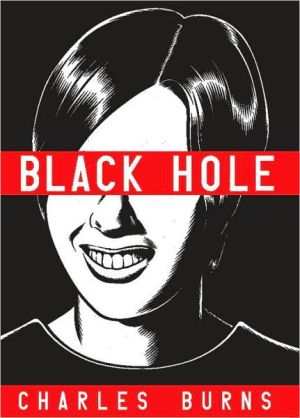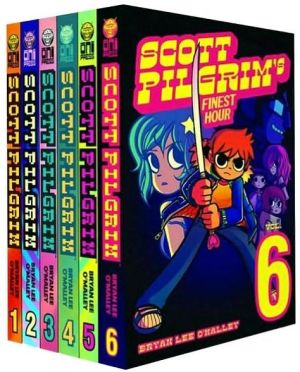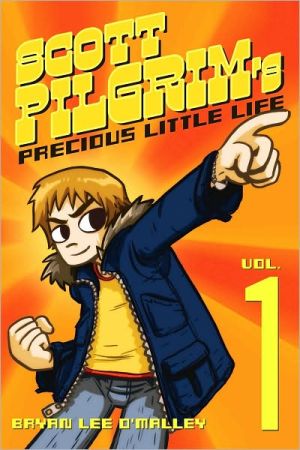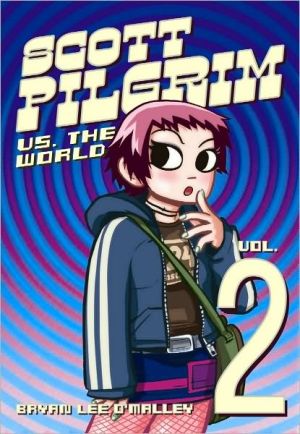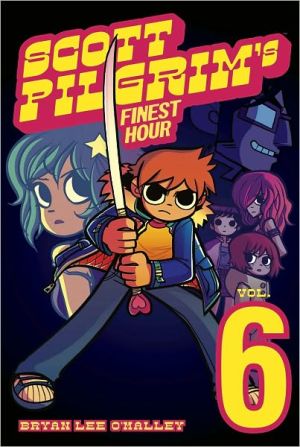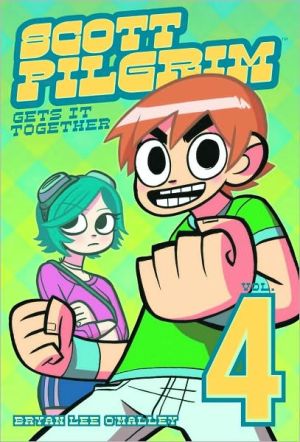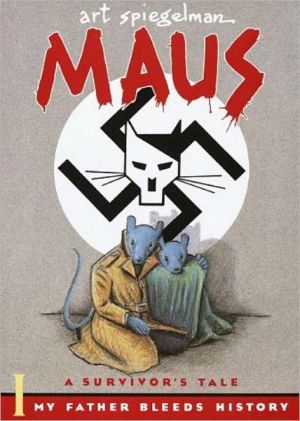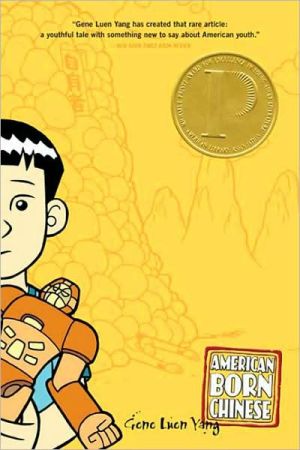Black Hole
Suburban Seattle, the mid-1970s. We learn from the out-set that a strange plague has descended upon the area’s teenagers, transmitted by sexual contact. The disease is manifested in any number of ways — from the hideously grotesque to the subtle (and concealable) — but once you’ve got it, that’s it. There’s not turning back.\ As we inhabit the heads of several key characters — some kids who have it, some who don’t, some who are about to get it — what unfolds isn’t the expected battle to fight...
Search in google:
Suburban Seattle, the mid-1970s. We learn from the out-set that a strange plague has descended upon the area’s teenagers, transmitted by sexual contact. The disease is manifested in any number of ways — from the hideously grotesque to the subtle (and concealable) — but once you’ve got it, that’s it. There’s no turning back.As we inhabit the heads of several key characters — some kids who have it, some who don’t, some who are about to get it — what unfolds isn’t the expected battle to fight the plague, or bring heightened awareness to it , or even to treat it. What we become witness to instead is a fascinating and eerie portrait of the nature of high school alienation itself — the savagery, the cruelty, the relentless anxiety and ennui, the longing for escape.And then the murders start.As hypnotically beautiful as it is horrifying, Black Hole transcends its genre by deftly exploring a specific American cultural moment in flux and the kids who are caught in it- back when it wasn’t exactly cool to be a hippie anymore, but Bowie was still just a little too weird. To say nothing of sprouting horns and molting your skin…The Washington Post - Ben SchwartzLongtime fans who know Burns from Big Baby or Hard-Boiled Defective Stories may miss the ironic humor-horror of those earlier works. Here, Burns builds up to a comic-book symphony of dread and self-loathing about that scarring experience called "growing up." Burns's art is thick with black ink -- so much so that even daylight scenes sop with pools of shadow and dark ooze. His kids drag clouds of despair with them. Often drawn in photo negatives, Black Hole depicts a world in which the white lines of order hold back the nocturnal depths of emotion, but just barely.
\ Ben SchwartzLongtime fans who know Burns from Big Baby or Hard-Boiled Defective Stories may miss the ironic humor-horror of those earlier works. Here, Burns builds up to a comic-book symphony of dread and self-loathing about that scarring experience called "growing up." Burns's art is thick with black ink -- so much so that even daylight scenes sop with pools of shadow and dark ooze. His kids drag clouds of despair with them. Often drawn in photo negatives, Black Hole depicts a world in which the white lines of order hold back the nocturnal depths of emotion, but just barely.\ — The Washington Post\ \ \ \ \ Publishers WeeklyThe prodigiously talented Burns hit the comics scene in the '80s via Raw magazine, wielding razor-sharp, ironic-retro graphics. Over the years his work has developed a horrific subtext perpetually lurking beneath the mundane suburban surface. In the dense, unnerving Black Hole, Burns combines realism-never a concern for him before-and an almost convulsive surrealism. The setting is Seattle during the early '70s. A sexually transmitted disease, the "bug," is spreading among teenagers. Those who get it develop bizarre mutations-sometimes subtle, like a tiny mouth at the base of one boy's neck, and sometimes obvious and grotesque. The most visibly deformed victims end up living as homeless campers in the woods, venturing into the streets only when they have to, shunned by normal society. The story follows two teens, Keith and Chris, as they get the bug. Their dreams and hallucinations-made of deeply disturbing symbolism merging sexuality and sickness-are a key part of the tale. The AIDS metaphor is obvious, but the bug also amplifies already existing teen emotions and the wrenching changes of puberty. Burns's art is inhumanly precise, and he makes ordinary scenes as creepy as his nightmare visions of a world where intimacy means a life worse than death. (Oct.) Copyright 2005 Reed Business Information.\ \ \ Library JournalBurns has been serializing this chilling story, nominated for several Eisner and Harvey Awards, since 1994. It depicts a group of mid-1970s high school students and their everyday lives of partying, drugs, and sex, with one horrific deviation from reality: an apparently incurable sexually transmitted disease referred to only as "the Bug," which mutates its victims in grotesque ways. One victim grows a tail, another grows a second mouth on his chest; some can still pass as normal in society, while others, more noticeably changed, live in a makeshift tent camp in the woods. The story, told in a suspense-building non-linear manner, largely follows one attractive girl who catches the Bug and is forced into hiding with her boyfriend, while someone is apparently stalking the frightened outcasts in the woods. Burns's highly polished cartooning combines naturalism with jolts of unreal horror; his frequent dream sequences are full of bizarre, nightmarish imagery. The Bug seems not just a metaphor for AIDS, but a metaphor for how teen sex itself is often viewed: as something that taints those who do it, and separates them from those who haven't. With full-frontal nudity, sex, and disturbing imagery, this is for adult collections. Copyright 2006 Reed Business Information.\ \ \ \ \ Kirkus ReviewsThere's nothing funny about high school in this black-and-white comics collection, which should strike a particularly sharp chord among those who endured and survived their adolescent rites of passage in the early 1970s. Though originally issued as a series of 12 comic books, this anthology by the Seattle-based Burns (Big Baby, 1985) has the thematic coherence of a graphic novel. It details the sexual and psychedelic misadventures of a group of teenagers, from their initiation into the grisly mysteries of Biology 101 through a summer in which some of their lives seem like science experiments gone awry. Within the world delineated through the nightmare caricatures of Burns, intercourse can leave an indelible impression on the skin, like a strange stigmata, while indulging in drugs can blur the already thin line between reality and illusion. Identity is up for grabs, as experience and circumstance wreak transformations that leave some of these kids strangers to themselves, as well as to their friends. Yesterday's girl next door falls under the glam-rocking spell of David Bowie's Diamond Dogs, while Neil Young's equally popular Harvest seems to serenade a parallel sphere. This is a world in which boys discover that girls have tails, and girls discover that boys are unfathomable. Ultimately, these befuddled characters drift away from the security of home and the regularity of familiar relationship into a wooded wilderness where they stumble upon dismembered limbs and strange effigies and run the risk of disappearing into a variety of black holes. If this were a movie (and in the wake of Sin City, it could be), it would need to be toned down and cleaned up to avoid an NC-17 rating. Yet Burnsuses full-frontal nudity for more than titillation (the sex isn't very sexy, the flesh often repugnant) and disturbing imagery for more than shock value. If the world he conjures is unsettling, it's also eerily familiar. This volume should expand the cult following of a cutting-edge illustrator.\ \
